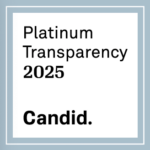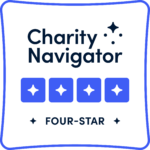This is the second of two blog posts highlighting Friends’ upcoming September 20th event discussing the Breakthrough Therapy designation (BTD). This post will focus on the key challenges between the FDA and drug sponsors that we have identified in our work. Read the first here.
The regulatory review process for drugs is a resource intensive undertaking for both the drug sponsor and the U.S. Food and Drug Administration (FDA). The FDA has multiple expedited programs available to facilitate regulatory review for promising therapeutics with the potential to improve patient outcomes. One such program, Breakthrough Therapy Designation (BTD), has been particularly beneficial for oncology drug development and regulatory review, resulting in a quicker median time to approval for 61 novel oncology drugs compared to drugs without the designation. Considering the successes of BTD, it is also essential to consider the coordination, time, and effort necessary to develop, review, and commercialize BTD drugs within compressed timelines, and to re-evaluate how the program may be further optimized based on the lessons learned over the past eight years. To this end, Friends conducted a survey of 19 sponsors with BTD experience to identify key pressure points and challenges within the BTD drug development process and regulatory review. These identified challenges informed subsequent focused discussions on potential future optimization efforts. Several of the key challenges identified through the survey and focused discussions are described here.
Timing and Criteria for Requesting BTD
BTD offers opportunities for enhanced interactions with FDA to help collaboratively plan development and resolve issues. However, the minimum clinical requirements for requesting BTD lack clarity. As a result, some applications with promising, but limited, available clinical data may not initiate discussions about the potential for BTD early enough and ultimately receive BTD too late to maximize the benefit of enhanced interactions with FDA. Friends conducted a landscape analysis of meeting utilization for products approved between 2018 and 2021 and found NDAs received BTD closer to submission of the marketing application compared to BLAs (292 median days before submission vs. 734 median days before submission). Thus, it is important to clarify the requirements and timing of requesting BTD and incorporate consideration of the unique development paradigms for drugs and biologics.
Utilization of BTD Meetings to Address Discipline-Specific Challenges
After BTD is granted, additional guidance is needed regarding the mechanisms available for requesting feedback from FDA and the type of data most useful for informing these conversations. Several components of drug development are difficult to complete within the compressed timeline of BTD and when discussions to address these potential roadblocks are not initiated in a timely manner, delays can occur, possibly affecting time to approval. These challenges are magnified for more complex applications such as those involving novel or innovative approaches, as it can be unclear how FDA considers certain data (e.g., exposure-response data generated using modelling) or whether the data available will be sufficient for FDA to provide actionable guidance or feedback. Several of these potentially rate limiting challenges are described below.
- Co-Development of Diagnostics – Oncology agents increasingly are targeted therapies and rely on an accompanying diagnostic to identify patients who would benefit from treatment. Lack of coordination between Centers at FDA (e.g., between CDRH and CDER/CBER) can result in a misalignment of device and drug development timelines and lead to delays in approval.
- Dose Optimization – Selection of the pivotal dose requires a significant amount of time, and when constrained to the timeline of BTD, may be done based on very limited data. BTD NDAs are permitted to provide evidence of dose optimization in the post-market setting, however, it can be expensive and time consuming to make post-market changes to an already approved dosing regimen.
- Chemistry, Manufacturing, and Controls (CMC) – CMC processes can slow the approval process if initiation of CMC discussions is delayed. This is particularly true for innovative therapies (such as cell and gene therapies) granted BTD which require complex manufacturing based on limited prior experience.
Join Friends on September 20th, 2021, for a public virtual meeting focused on presenting solutions to alleviate some of these challenges and to discuss the future of BTD. Click HERE to register.

